#Aluminum Acetate
Explore tagged Tumblr posts
Text
youtube
Before you comment that I should be using tannins if I want the colors to last in the sun, please check out my newest video:
Mordanting Cotton With vs Without Tannin -
• Mordanting Cotton With...
In this video I use 6 mordanting methods on cotton fabric and then dye the fabric pieces with 4 natural dyes. You will see the mordanting process and the results. I also performed a light/wash fastness test on the dyed fabrics to see how the colors last.
Blog post with photos of the results and descriptions of all mordanting methods: https://www.chromaticnatureclothing.c...
Mordant ingredients I used:
Aluminum Acetate - https://www.chromaticnatureclothing.c...
Aluminum Lactate - https://www.chromaticnatureclothing.c...
Alum (Potassium Aluminum Sulfate) - https://chromaticnatureclothing.com/p...
Sodium Acetate - https://chromaticnatureclothing.com/p...
Soda Ash - https://www.chromaticnatureclothing.c...
Calcium Carbonate (chalk) - https://www.chromaticnatureclothing.c...
Soy milk & vinegar - grocery store
Synthrapol detergent - https://www.misterart.com/crafts/text...
The dyes I used:
Madder root - https://www.chromaticnatureclothing.c...
Osage Orange - https://www.etsy.com/listing/62246447...
Avocado skins - eat some avocados
Logwood -https://chromaticnatureclothing.com/p...
00:00 - What this is about
01:45 - Soy milk mordant method
04:03 - All the other mordant methods
10:44 - Dyeing the fabrics
12:56 - Light/wash fastness test
14:01 - Soy milk debacle
15:07 - Madder root results
19:22 - Osage Orange results
21:46 - Avocado skins results
24:14 - Logwood results
26:31 - My closing thoughts
#Chromatic Nature#solarpunk#natural dye#how to#how to dye#diy#do it yourself#mordant#cotton#cotton fabric#Aluminum Acetate#Aluminum Lactate#Alum#Sodium Acetate#Soda Ash#Calcium Carbonate#chalk#Soy milk#vinegar#Madder root#Osage Orange#Avocado skins#avocado#Logwood#Youtube
14 notes
·
View notes
Text
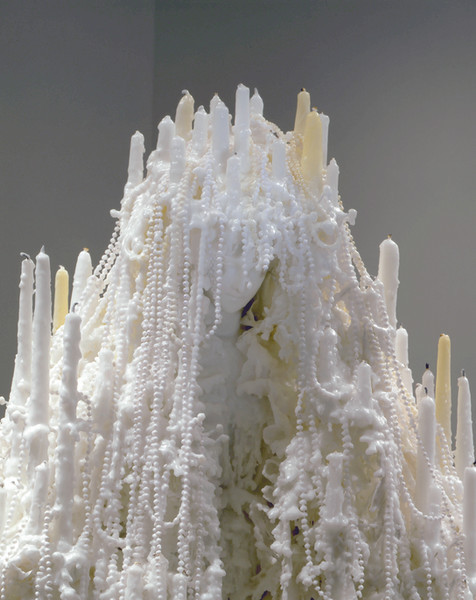

Untitled #1093 (Buddha Boy), 2001 - 03 by Petah Coyne
Specially-formulated wax, cast-wax statuary figure, pigment, silk flowers, synthetic feathers, acetate ribbon, tassels, white pearl-headed hat pins, artificial pearl strands, horse hair, chicken-wire fencing, wire, acrylic primer, plywood, metal hardware, aluminum 52 x 51 1/8 x 52 inches. Photograph: Wit McKay
1K notes
·
View notes
Note
my mother has asked me to ask “that weaver friend of yours” lol — do you have experience dyeing linen? what does the process look like for natural vs synthetic dyes?
happy to be that weaver friend of yours 🥰❤️ dyeing linen is basically the same as dyeing cotton or any other cellulose fiber, so any synthetic dye that works for cotton will also work for linen. a professional grade fiber reactive dye like procion mx or dharma's procion (here) dyes cellulose fiber without heat, and the process is quick and painless. it just involves a large bucket, water, the dye powder and the cloth you wish to dye. i have little experience with rit dye so i'm not sure if you'd need heat for that, but procion dye is higher quality, comes in a lot more colours than rit, and a 2oz container is like $2 usd and goes a long way
the natural dye process for linen takes a lot longer than the procion dye process and requires several steps. cellulose fibers really don't like to take dyes so you basically have to do a bunch of alchemy to convince it to do what you want (compared to protein fibers like wool and silk which love dyes and only need some gentle nudges)
naturally dyeing linen depends on the dye you'd wish to use, but the process is essentially: scouring, mordanting, and dyeing. it's really important that you scour linen especially because it contains a lot of pectins that prevent dye from penetrating the fiber, so a harsh scouring is best (ie. washing it with hot water and ph neutral soap, even to the point of boiling the cloth. linen can take a lot of heat and is better for it, cotton is more sensitive) you'll probably have to do this before dyeing it with the synthetic dye too for best results
most natural dyes require that you mordant the cloth before dyeing. some dyes don't require a mordant (indigo is the big one, but if you're working with onion skins or other materials that contain tannins this is also true. however mordanting the cloth before dyeing with tannins or even mordanting with tannins is still recommended for better colour performance long-term unless you're working with indigo in which case using a mordant can actually cause problems) but if you're unsure, assume that you need to apply a mordant. you essentially have to simmer the cloth in a hot pot with either a material that contains tannins (tannic acid), a natural bio-accumulator of aluminum (symplocos), or use a metal salt (alum acetate is best for cellulose, but iron and copper salts can also be used. the metal salts route requires more safety precautions esp if you use copper salt, you can't dump that down the drain) your choice of mordant impacts the final colour with different mordants shifting the chemical reaction that happens in the cloth when you dye it
with cotton and linen, after you use the mordant you need to use either a chalk or wheat bran bath to remove excess mordant from the cloth, esp if you use alum acetate, otherwise it can leave a whitish cast over the cloth and also impede dyeing lol. wheat bran baths tend to cause a warmer tone to the final dyed cloth, chalk baths cause a cooler tone. i only use wheat bran baths bc i prefer the warmth and i get the bran cheaply at my local punjabi grocer
only then can you dye the cloth, again unless you're working with a dye like coffee or tea or onion skins OR indigo. linen really doesn't like to take natural dyes unless you do all the above steps, it's stubborn. the dye process itself depends on what dye you use and you can do stuff like solar dyeing if you don't want to simmer it in a pot on a stove. if you plan to go the natural dye route lmk and i can send you some scans of a book i have that contains precise instructions for preparing linen for dyeing
#fun fact the word for mordant in bahasa (both msia and indonesia) is mordan lol#i love when stuff like that happens. like computer in bahasa msia being komputer#as a caveat these are the western steps for natural dyeing there are other approaches that include the same chemical processes#but dif techniques like ex. in malaysia/indonesia mordants and dye baths are fermented for several weeks to months#and the fermentation makes it so they can be used cold and you only have to dip them in the baths rather than simmer#but that takes even longer than the western methods and is less documented in an instructional sense so the western approach is easier
45 notes
·
View notes
Text

towwn: got your eye on new sunnies for summer? 😎 consider one of these shades made with style and sustainability in mind. beyond avoiding virgin plastics, the best eco-friendly sunglasses are durable, offer high-quality uv protection, are crafted with recycled or sustainable materials. keep swiping to find a few of our fav “green-tinted” glasses brands.
@paradigmeyewear these iscc-certified recycled sunglasses boast glam, unisex ‘70s-influenced designs. made via 3-d printing + smart tech, the bold retro pairs also commit to fighting the climate crisis by donating to @coolearthaction.
@ballo.sun made in south africa, this eco-friendly + ethical co. uses recycled/upcycled wood, paper + fabric offcuts, plus bio-resin and cork. the b-corp brand supports gender equality, job initiatives + plants a tree for every sale.
@gemmastyleseyewear the factory where these cool shades are made is powered by 80% solar energy, plus they minimize waste through low-quantity production runs + recyclable shipping materials. travel cases repurpose two recycled plastic bottles.
sunski the brand’s famed “superlight” polymer frame designs include round, aviator + wayfarer frames to ensure comfy eye protection. in addition to using recycled materials, they partner with @earthguardians to support indigenous youth.
@banbeeyewear these aussie-made sunnies are crafted with sustainable materials like copper or biodegradable acetate at an accessible price.
@lespecs the “le sustain” collection commits to reducing eco-impact with carefully vetted materials, including recycled jersey pouches + cardboard box packaging. they also partner with @take3forthesea to protect all oceans, land + wildlife from plastic pollution.
@soloeyewear with eye health activism as part of its core mission, solo seeks to end blindness + restore vision for those in need. through ethically sourced recycled + repurposed materials, including bamboo, they reduce their carbon footprint & prevent hundreds of lbs. of virgin plastic yearly.
@proofeyewear this idaho eyewear co. got started on shark tank with sunnies handcrafted using sustainably-sourced wood, biodegradable cotton acetate + recycled aluminum.
17 notes
·
View notes
Text
Chapter 222 Trivia (Part 1)
Fun fact: this chapter is from issue #2 of WSJ's 2022 collection!

The Apollo mission had spacesuits tailor-made to each astronaut, but these days it's easier to use interchangeable parts and switch them out according to the size of the wearer, rather than having the whole suit fitted.
However, the gloves are always custom-sized for dexterity.


Vinyl fabric doesn't seem to have ever been used as part of a spacesuit, however spandex and nylon have, especially in the inner layers.
Outer layers include Teflon, Kevlar, and aluminized Mylar.
It's possible that rather than being used for the fabric, the vinyl is used for the suit's interior cooling tube system, and the aluminum is used for the Mylar rather than for the exterior metal parts, as pure aluminum is easily scratched.


You probably recognize this panel from the end of chapter 219. The only difference is Ryusui's head has been swapped with Stanley's.


Japanese doesn't have a "V" sound, which is why Chrome says "by" rather than "vi" or "vy".
Generally English words used in Japanese make this switch, for example "violin" becoming "baiorin" due to the lacking of "V" and "L" sounds.

This building may be where they're assembling the SENKU 11 rocket, however in this first panel it appears completed, but in later ones it's still under construction.



The PS5 was first announced in April 2019, and released November 2020. First images of the console were revealed on June 11th 2020.
The first global petrification happened in June 2019, so this person would know about the console but not known what it was meant to look like.


The robot maid request is most likely a reference to "Me and Roboco", another manga currently being published in Weekly Shonen Jump alongside Dr. Stone. It's a comedy series that follows a powerful-but-clumsy maid robot in a grade schooler's service.


(Later, Me and Roboco came out with a Dr. Stone parody for the 15th volume cover)

The vacuum tubes are back in the form of cavity magnetrons. These produce the microwaves that bounce around the microwaves' interior body.
The cooking effect was first discovered in 1945 when Percy Spencer noticed a candy bar had melted in his pocket after testing magnetrons.


Plastic wrap is vinyl that has been flattened to between 8-12 μm thick, (approximately 0.001 cm). For context, this is about as thick as a spider's web or the size of a droplet of water in fog.


The film Senku makes here is cellulose triacetate film, which is less flammable than earlier celluloid film, earning it the nickname "safety film".
The 8 mm part is the width of the film strip.
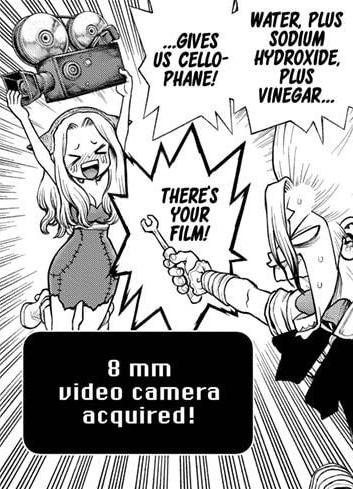
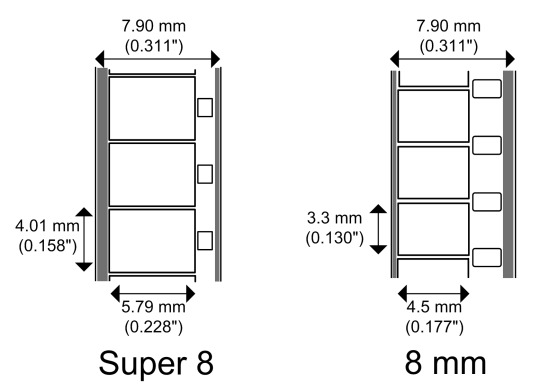
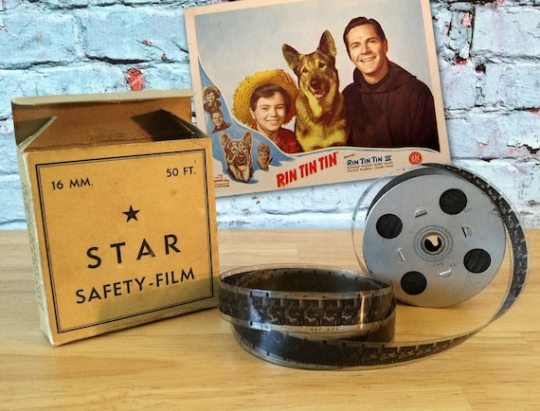
Unlike reusable hand-warmers that use supersaturated sodium acetate, these are one-time use and rely on oxidation to create heat. Once the packaging is opened, air penetrates the bag, oxidizing the iron. Vermiculite is added to remove moisture & salt is added as a catalyst.
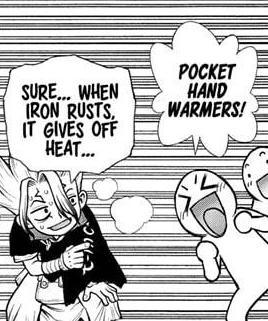

Chrome's design wouldn't work properly because he uses iron sand rather than iron powder. Iron sand is mostly magnetite, which is already an iron oxide and thus won't have the oxidation reaction or create heat.

The fridge (or maybe mini wine cellar/fridge?) design is a parody of Smeg, a kitchen appliance brand.
You can also see the Senku-brand PlayStation, robot maid, and protein powder.


(Next part)
18 notes
·
View notes
Text
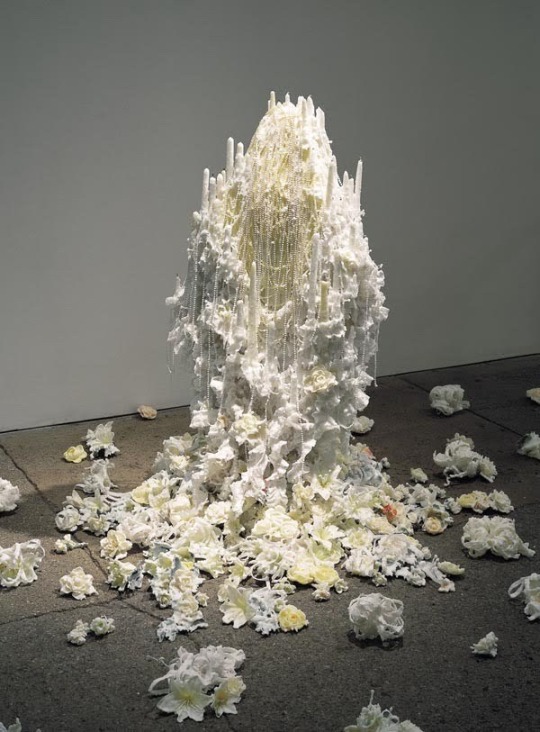
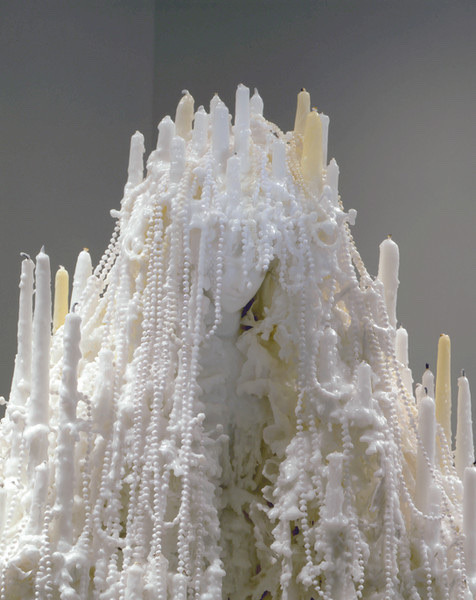
Untitled #1093 (Buddha Boy), 2001 - 03
by Petah Coyne
Specially-formulated wax, cast-wax statuary figure, pigment, silk flowers, synthetic feathers, acetate ribbon, tassels, white pearl-headed hat pins, artificial pearl strands, horse hair, chicken-wire fencing, wire, acrylic primer, plywood, metal hardware, aluminum 52 x 51 1/8 x 52 inches. Photograph: Wit McKay
8 notes
·
View notes
Text

Management and Treatment
How do you get rid of poison ivy?
You can’t get rid of poison ivy in one day, but for the fastest relief, you should take the following steps:
Rinse: Rinse your skin with soapy, lukewarm water as soon as possible. If you don’t wash off the urushiol oil, it can spread to other areas of your body and other people.
Wash your clothing: Wash all of your clothes immediately. Urushiol oil can stick to clothing, and if you touch it again, it can cause another rash.
Wash everything else: Wash anything that may have come into contact with the oil, including pets, gardening tools, camping gear or golf clubs.
Avoid scratching: It’s difficult, but try not to scratch. Scratching can lead to an infection.
Don’t touch the blisters: If your rash has blisters, leave them alone. Don’t peel off or try to remove the overlaying skin. This skin protects the wound and prevents infection.
Prevent infection: With any itchy rash, the skin is vulnerable to infection due to abrasions from scratching. Keep skin clean and dry, and notify your healthcare provider if there are signs of infection.
How to treat poison ivy
Rashes from poisonous plants usually go away on their own within a week or two. In the meantime, poison ivy treatment includes over-the-counter (OTC) medications that can relieve the itchy rash:
Anti-itch creams: Poison ivy creams include calamine lotion (Caladryl®) and hydrocortisone (Cortizone®). For blisters that start weeping or draining, you can use topical astringents made with aluminum acetate (Burow’s Solution® or Domeboro® astringent solution).
Antihistamines: Antihistamines include medications such as diphenhydramine (Benadryl®).
Your healthcare provider may prescribe a poison ivy rash treatment if it becomes more severe or forms on the mucous membranes of your eyes, nose, mouth or genitals. They may recommend an oral steroid such as prednisone.
Your healthcare provider may also prescribe treatment for a secondary infection if this develops.
What else can I do at home to relieve the itch?
Home remedies for poison ivy include:
Cold compresses: Try applying a cool compress to your itchy skin. Wet a clean washcloth with cold water and wring it out. Then, place the cool cloth onto the area that itches.
Lukewarm baths: Taking a short, lukewarm bath with colloidal oatmeal (Aveeno®) can provide some relief from the itching. You can also try adding 1 cup of baking soda to your bath. Short, cool showers may also help.

I prescribed a pt prednisons taper for his poison ivy. I used 20 mg tablets. So the taper is: 60 mg x5 days (15 pills), then 40 mg x4 days (8 pills), then 20 mg x3 days (3 pills), then 10 mg x2 days (1 pill for 1/2 pill the last 2 days) for a total 27 pills.
2 notes
·
View notes
Text


Sailor Moon Lipgloss
$8.75
Description
Get the latest in the trends with this fabulous lip-gloss, light and easy application. The lightweight formula moisturizes and softens your lips. This is the perfect product for someone who likes to have their lips stand out and make a statement.
Ingredients:
Hydrogenated Poly isobutene, Tocopherol Acetate, Prunus Armenia (Apricot) Kernel Oil, Acrylates Copolymer, Alumina, Aluminum Calcium Sodium Silicate, Calcium Aluminum Borosilicate, Calcium Sodium Borosilicate, Silica, Mica
Princess Lipgloss
$8.75
Description
Get the latest in the trends with this fabulous lip-gloss, light and easy application. The lightweight formula moisturizes and softens your lips. This is the perfect product for someone who likes to have their lips stand out and make a statement.
Ingredients:
Hydrogenated Poly isobutene, Tocopherol Acetate, Prunus Armenia (Apricot) Kernel Oil, Acrylates Copolymer, Alumina, Aluminum Calcium Sodium Silicate, Calcium Aluminum Borosilicate, Calcium Sodium Borosilicate, Silica, Mica.
Website
#kawaii aesthetic#pastel aesthetic#aesthetic#cute#lip gloss#shiny#soft aesthetic#soft girl era#pinterest#fypツ#foryou#cosmetics#fenty beauty#beauty#luxury#girl therapy#Dior#chanel#girl hood#pink aesthetic#pastel pink#pink#glitter#clear gloss#girl blogger
5 notes
·
View notes
Text
Ivan Tries to Find a Good CAR-15 Replica, Part 1
I want to preface this by saying that had I planned ahead the money I spent doing this could have gone to a pretty good functional AR-15 replica of an XM177E2
A few years ago a friend of mine was getting back into airsoft. I thought I would combine my LRRP collection with airsoft and to that end I bought this Classic Army XM177E2 replica

I won’t go into all the ins and outs of the CAR-15 family and the US military’s quest for a shortened M16 here. But, as far as replicas go, this is a pretty poor one. It’s kind of a strange haphazard blend of vaguely retro features that are simultaneously more appropriate to earlier and later models. The main E2 features here are the longer barrel and its so-so replica of the E2 style flash hider.
An XM177E2 should have an angled delta ring, not a straight one, and it should have a round locking ring rather than castle style nut on the buffer tube. The markings aren’t really even in the realm of accurate.

The dust cover here is a later style. More bad markings. The shape of the lower is pretty close to appropriate for an XM177E1, but an E2 should have full fencing around the magazine button. You can see here there are little reinforcing ribs on the plastic stock. A real XM177E2 would have an acetate covered aluminum stock without those ribs.

The handguard cap there is a later M4 style. The original front sight had a bayonet lug which was incorrect. This front sight is from an EMG XM177E1, which will be the subject of the second part of this series.

The buffer tube on the original gun was out of center with the bore so a friend of mine replaced it with one he had laying around, which is why it’s worn more than the rest of the gun. It is a six-position buffer tube, an XM177E2 should have a two position.

Curiously the handguard with which it came was actually pretty close to the correct profile for an XM177 style and it had six holes instead of seven, which is also accurate.
I spray-painted the furniture with a gloss epoxy paint to make it look more like an original which had fairly shiny plastic but this obviously isn’t a 1:1 replica.
Since I bought it for airsoft the aforementioned friend took the time to shim the gearbox and fine-tune the internals so it actually performs quite well as an airsoft gun and so it has remained in the fold because it is functional in that capacity.
A few years later I was made aware of the aforementioned EMG XM177E1, which features in the next post, and then a GBBR version of the XM177E2 later still
10 notes
·
View notes
Text
youtube
Welcome to Baja California Sur in Mexico where the aloe vera plant is bursting with natural color. Harvesting fronds to chop & soak in the sun will welcome subtle shades of a soft pink & peach in a simple solar dye process. Add a tie dye effect by binding fiber in a kumo shibori technique and shift colors with a pH modifier of baking soda. Such a fun and easy way to capture local color while on the road! This tutorial will show you how make a solar dye with aloe vera & tie a kumo binded cotton napkin, as well as the resulting patterned design & color on various fibers including silk/nylon and cotton ribbons.
CHAPTERS
0:00 Introduction - Baja aloe vera
1:24 Solar dyeing on the road
4:19 How to make aloe vera dye
5:21 Ribbon prep
6:06 Day 1 color
6:40 How to tie kumo shibori
13:36 Day 2 color
15:22 Day 3 color
16:56 Alkaline bath
18:24 Results
22:00 Wrap up
22:41 Blooper
SUPPLY LIST
Aloe vera
Knife
Cutting board
Glass jar
Rubberbands
Baking soda
Mordant - alum, aluminum acetate
Textile - silk/rayon and cotton shown in video
#Margaret Byrd: Color Quest#solarpunk#how to#how to dye#natural dye#dye#solar dye#diy#do it yourself#aloe vera#aloe#cotton#silk nylon#Youtube
4 notes
·
View notes
Text
Dimethyl ether, carbon tetrachloride, sodium thiohydrate, pyridine, hydrogen bromide, barium hydroxide, barium sulfide, phenol, hydrochloric acid, dibromomethane, sodium hydroxide, n-butylene ether, 3-methylpyridine, bromoethane, aluminum trichloride solution, benzene, ethanethiol, octadecyl acetamide, acetonitrile, N N-diisopropylethylamine, hydrogen fluoride [anhydrous], potassium antimony tartrate, n-butylacetate, ethylene oxide, cyclohexane, potassium hydroxide, aluminum trichloride [anhydrous], 2-nitroanisole, 1, 2-dichloropropene, n-butanol, magnesium, O O ≤-diethylthiophosphoyl chloride, phenol solution, N-(phenylethyl-4-piperidine) propionamide citrate, ethyl acetate, 1,4-xylene, 2-aminopropane, isophthaloyl chloride, 2-chlorotoluene, cyclopentene, propionic acid, hydrofluoric acid, 2-butenaldehyde, 2-methylpentane, ethylamine, bromine, coal tar pitch, ethyl formate, ammonia solution [containing ammonia > 10%] 1-aminohydrin, 4-ethoxyphenylamine, diisopropylamine, sodium ethanolate, nitrifying asphalt, hydrazide hydrate [containing hydrazide ≤ 64%], dimethyl sulfate, acetic acid [content > 80%], acetaldehyde, 2-butylketone, aluminum borohydrate, phenylethanolnitrile, 2-chlorobenzoyl chloride, sodium hypochlorite solution [containing available chlorine > 5%], 2-aminophenol, chloroplatinic acid, barium chloride, tert-butylbenzene, tribromide, methyl sulfide, Diphosphate pentasulfide, diethylamine, chlorobenzene, n-butylbenzene, 1,3-xylene, hydrogen peroxide solution [content > 8%], terephthaloyl chloride, red phosphorus, tetramethyl ammonium hydroxide, methanol, propionaldehyde, 2-methoxyphenylamine, bleach powder, triethyl propropionate, 1-bromobutene, cyclohexanone, di-(tert-butylperoxy) phthalate [paste Content ≤ 52%], tetrahydrofuran, trichloroethylene, magnesium aluminum powder, formic acid, sodium ethanol ethanol solution, isopropyl ether, acetic acid solution [10% < content ≤ 80%], 2-methyl-1-propanol, diethyl carbonate, sodium aluminum hydroxide, 2-methylpyridine, n-butylamine, toluene, thiourea, magnesium alloy [flake, banded or striped Containing magnesium > 50%], methyl benzoate, hydrobromide, 4-methylpyridine, iodine monochloride, sodium sulfide, 3-bromo-1-propene, 2-propanol, potassium borohydroxide, triethylamine, ammonia, 4-nitro-2-aminophenol, 1, 2-epichlorohydrin, 1-propanol, cyclopentane chloride, n-propyl acetate, bromoacetic acid, zinc chloride solution, trichloromethane, 1-bromopropane, monoamine [anhydrous], perchloric anhydride acetic anhydride solution, 1-bromopropane Potassium hydroxide solution [content ≥ 30%], boric acid, sodium borohydrate, hydroacetic acid bromide solution, acrylic acid [stable], cyclopentane chloride, ammonium hydrogen sulfate, calcium hydroxide, 2-ethoxyaniline, dimethyl carbonate, sodium nitroso, monomethylamine solution, zinc chloride, hydrogen sulfide, trimethyl acetate, iodine trichloride, nitric acid, sodium hydroxide solution [content ≥ 30%], trimethyl orthoformate, hydrogen chloride [anhydrous], 4-methoxyaniline, sulfur, succinile, acetic anhydride, dipropylamine, methyl acetate, isopropylbenzene, propionyl chloride, ethyl formate, phosphorus pentoxide, formaldehyde solution, nitrogen trifluoride, acetone, ethanol [anhydrous], white phosphorus, 1, 2-xylene, 1, 3-dichloropropene, 1, 1, 1-dichloroethane, N N-diethylethanolamine, sulfuric acid, N, N-dimethyl formamide, methyl mercaptan, 4-chlorotoluene, 1, 2-dichloroethane, dichloromethane, succinyl chloride, 2, 3-dichloropropene, xylene isomer mixture, tartrate nicotine, cyclopentane, petroleum ether, bromocyclopentane Potassium perchlorate, potassium chlorate, aluminum powder, chromic acid, iron chloride, lead nitrate, magnesium powder, nickel chloride, nickel sulfate, perchloroethylene, phosphate, potassium dichromate, sodium dichromate, zinc nitrate
2 notes
·
View notes
Text
YOUR MUSE’S AESTHETIC. sent by @inflame 🤍
TASTES. pepperoni pizza. funyuns. coca-cola. lucky charms, eaten straight from the box. ice-cold pabst blue ribbon beer. buttermilk pancakes with a side of bacon. cup noodles. orange julius. tortilla chips and guacamole. perfectly ripe pineapple chunks. frozen meals. black filter coffee. watermelon-flavored chewing gum.
SMELLS. body spray, boyish and obnoxious. ammonia and acetic acid, courtesy of a meth lab. smoke, sweat, and burnt sugar, lingering long after.
SIGHTS. ridiculously oversized clothing. xbox controllers. a sky so blue it seems limitless. methamphetamine-induced hallucinations. stained motel sheets . a beetle crawling along the sidewalk. old sketchbooks. crumpled dollar bills. a customized license plate. impudent grins. sparsely freckled shoulders. an empty mattress on the floor. grimy, graffitied walls. a tattooed hand drumming against any surface. lipstick-stained cigarette butts. bullet holes. pre-paid phones. debauched house parties. a strip of aluminum foil. children’s toys. a scrawny silhouette, shaking and shaking and shaking.
SOUNDS. incessant vocal fry. slurred sentences. the rev of an engine. a message left on an answering machine. stomach-churning sobs. the spark of a lighter. cypress hill’s discography. filler words. explosive confrontations. a gunshot echoing through the night. the music used in sonic games. a kid’s joyous laughter.
SENSATIONS. the familiar tingle of tears before they begin to fall. a pool of warmth upon being praised. breathing in quick, shallow bursts. the thrill of a risky escapade. skin that’s softer to the touch than you might’ve thought. recurrent episodes of hyperthermia. a chemically stimulated heartbeat, hammering triple-time. reeling from a ferocious punch. the kind of self-loathing that swallows you whole.
THEMES. searching for purpose in all the wrong places. doglike devotion. love and loss. non-normative masculinity. a bottomless pit of guilt. growing pains. an addict’s drive to destroy himself. lack of agency. hunger for approval. refusing to go down without a fight. chains and collars. bearing the burden of your father’s sins. a deep desire to be good against an environment that punishes goodness.
0 notes
Text
Different Types Of Silicone Sealant | JCT Machinery
Recently, a group of foreign customers came to JCT's factory to learn how to make silicone sealant, and saw how high quality the JCT 5L double planetary mixer is! We made neutral silicone sealant and acidic silicone sealant.
Many customers have asked JCT: which silicone sealant is better sold? Different silicone sealants have different application scenarios, and the performance characteristics of silicone sealant are also different.

Comparison of Silicone Sealants
1. Curing Mechanism
Neutral Silicone Sealant: Its curing process is triggered by a neutral catalyst. This type of sealant does not release any acidic substances during the curing process, so it has no sour smell. The reaction of neutral silicone sealant is usually promoted by moisture or humidity.
Acidic Silicone Sealant: Its curing process is caused by the catalytic reaction of an acidic catalyst. During the curing process, acidic silicone sealant releases a small amount of acetic acid, so it has a distinct sour smell.
2. Scope of Application
Neutral Silicone Sealant: Because it does not release acidic substances, it is suitable for a wider range of materials, including stone, aluminum alloy, mirror, plastic, wood, etc. This makes neutral silicone sealant more widely used in fields such as construction, automobiles, electronics and glass curtain walls.
Acidic Silicone Sealant: It is mainly used for bonding non-porous materials such as metal, glass and ceramics. Due to the release of acetic acid, acidic silicone sealant is not suitable for certain acid-sensitive materials, such as aluminum, copper, galvanized steel and other metals, especially in automobiles, construction and electronic products.
3. Curing Speed
Neutral Silicone Sealant: The curing speed is relatively slow, especially in low humidity environments, but its advantage is that it can be constructed in more demanding environments.
Acidic Silicone Sealant: Usually cures faster, suitable for fast construction and sealing work in a short time.
4. Weather Resistance and Durability
Neutral Silicone Sealant: Neutral silicone sealant usually has better weather resistance, aging resistance and UV resistance, and is particularly suitable for applications exposed outdoors for a long time.
Acidic Silicone Sealant: Acidic silicone sealant usually has good weather resistance, but its applicable temperature range and durability are slightly worse than neutral silicone sealant.
5. Environmental Adaptability
Neutral Silicone Sealant: Because it does not release harmful gases, it is suitable for use in applications with high corrosive requirements, especially for electronic equipment, glass decoration and other precision engineering materials.
Acidic Silicone Sealant: Because it releases acetic acid, it is not suitable for sealing materials that require non-corrosive or acid-sensitive.
0 notes
Text

Eleccion Unisex Full Rim Square Acetate Aluminum Eyeglasses 6065 http://dlvr.it/TGPrCJ
0 notes